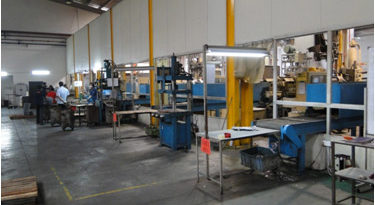PHNOM PENH: AQUACULTURE-With aquaculture on the rise, fish production up 6 pct in 2018
Fish is one of the most important components of the Cambodian diet. KT/Chor Sokunthea / Sum Manet / Khmer Times Share:
.
Fish production in the Kingdom rose to 910,153 tonnes in 2018, a 6.2 percent increase year-on-year made possible by a rapidly growing aquaculture sector.
Freshwater fish catches reached 535,005 tonnes, while saltwater fish catches amounted to 121,100 tonnes, according to the latest report from the Ministry of Agriculture, which also showed that production in fish farms equalled 254,048 tonnes.
The same report points out that 210 million breeding fish were produced in 2018, an increase of 5 million compared to the previous year.
.
ADS by Cloud 9:
.
– SPACE RESERVE FOR YOUR ADVERTISEMENT –
.
.
Ministry of Agriculture Veng Sakhon highlighted the role fish plays in the local diet, explaining that it is an important source of protein, nutrition, and income for Cambodian people. He said the government aims to expand fish production to meet strong domestic demand.
“We cannot exploit our rivers indefinitely. The limit for Cambodia is 600,000 tonnes of fish a year, and last year we already caught more than 500,000 tonnes. This is why we are now focusing on developing the aquaculture industry,” he said.
With one hectare of land and enough water, a farmer can generate anywhere from $5,000 to $10,000 in revenue per year in the aquaculture industry, the ministry said, adding that the sector can play a significant role in national economic growth.
“In 2018, Cambodia imported 24,000 tonnes of seafood, mostly shrimp, crab, lobster and saltwater fish. Now, we have been able to reduce imports because we have expanded the aquaculture industry,” Mr Sakhon added.
Dr Shetty Seetharama Thombathu, chief technical advisor for the United Nations Industrial Development Organization, said fish production needs to continue increasing to meet rising local demand as well as demand from the rapidly growing number of tourists.
.
– SPACE RESERVE FOR YOUR ADVERTISEMENT –
.
.
.
However, he said, relying on more wild fish catches is not sustainable.
“To meet local demand, we need to produce more fish in farms,” he said, adding that “we need to conserve our resources. We need to reduce post-harvest losses.”
Mr Thombathu noted that currently more than 30 percent of fish is lost due to poor cold chain systems during handling and transportation.
“This is mostly due to inadequate infrastructure – including ice factories, landing centres, and collection centers, among others – and limited knowledge on post-harvest management such as the use of ice and careful handling and transportation,” Mr Thombathu said.
Regarding last year increase in fish production, he said it was mostly the result of a more developed aquaculture sector.
“Aquaculture is picking up speed in the country. We should not expect freshwater and saltwater fish catches to go up. They have already reached the maximum sustainable level.
“We need to maintain and sustain this level of wild fish catches. We need to save our fishery environment and resources for the future and put the focus now on aquaculture, which has great potential for growth,” Mr Thombathu said.
.
ADS by Cloud 9:
.
– SPACE RESERVE FOR YOUR ADVERTISEMENT –
.
.
Fish is the second most consumed food in Cambodia after rice, he said, adding that Cambodians are among the highest consumers of fish in the world, with annual per capita fish consumption estimated at 52.4 kilograms.
Last week, the US launched a new initiative to bolster the local aquaculture industry. With a budget of $17 million and a 5-year lifespan, the Commercialization of Aquaculture for Sustainable Trade (CAST) programme seeks to boost local production of freshwater fish, the main source of protein for Cambodians.
During the launch, Michael A. Newbill, chargé d’ affaires at the US Embassy, said aquaculture is one of Cambodia’s most important sectors, with production growing by 17 percent in 2017.
“Cambodians eat a lot of fish,” he said. “Research shows that fish make up 76 percent of the animal protein consumed by the average Cambodian, making Cambodians the largest consumers of freshwater fish per capita in the world.”














